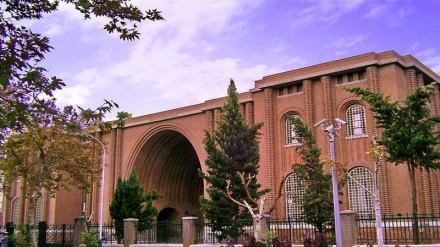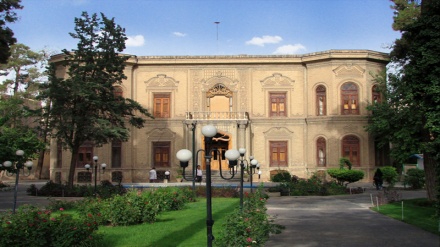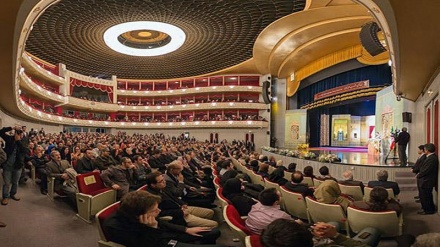Iran Your Attractive Destination (205)
Today, we get to know different sections of Hazrat Abdul-Azim (AS) holy Shrine.
As a reminder, last week we became familiar with Hazrat Abdul-Azim (AS) holy Shrine, in addition to Imamzadeh Taher and Imamzadeh Hamzeh Shrines. In the recent years, a plan has been launched to develop Hazrat Abdul-Azim Holy Shrine within the framework of more than sixteen religious, cultural, and welfare projects. This plan has been relatively completed to this day.
One of the important sections of Hazrat Abdul-Azim Holy Shrine is its three-story central library, with a foundation of roughly 5000 square meters. The precise date of establishment of the first library of this holy shrine remains unknown. However, based on historical evidences, a library was established within this Holy Shrine in the Safavid era, which was considered as one of the accredited libraries of that age.
In the year 1037 AH, the Safavid King, Shah Abbas, donated 120 hand-written books to the library of this holy shrine and Islamic scholars; three volumes of which are kept in the present day library. The old library was active till 1300 AH. It was later shutdown. No trace of the books which were kept in the old library has remained to this day. The new library was established in the year 1324 AH. Throughout the years, in addition to purchase and collection of important books, enthusiasts have also donated valuable books to this library, such that currently more than 100,000 volumes of books are kept in this library. This library also displays a number of ancient hand-written books. Additionally, a large number of books in Farsi, Arabic, English, and French languages are kept in the present day library of Hazrat Abdul-Azim (AS) Holy Shrine. This library also includes a study hall, while its computer section meets the needs of researchers.
Throughout the course of history, major seminaries have taken shape next to holy shrines. Hazrat Abdul-Azim Holy Shrine is no exception to this case. Borhan Seminary is one of the ancient sites affiliated to Hazrat Abdul-Azim Holy Shrine, which has been located at the northern corner of the shrine. This seminary dates back to Saljuqid era. During the recent years, this seminary has been enlarged and reconstructed. The seminary is equipped with a library and a data bank, for the usage of Islamic scholars. Hazrat Abdul-Azim Seminary is also located adjacent to this holy shrine, the construction of which dates back to the early years after the victory of Islamic Revolution. This seminary maintains the capacity to admit 250 scholars and is equipped with all educational and welfare facilities. This seminary maintains 68 chambers in its dormitory, and 45 chambers in three other buildings.
Given that Hazrat Abdul-Azim (AS) is known as one of the main hadith scholars in the history of sacred religion of Islam, the Hadith Science Faculty has been constructed in southeastern corner of this holy shrine. The foundation of the building of this faculty stands at 23,000 square meters. This faculty is fully-equipped, and consists of sections such as a library, another library of hand-written books, language teaching laboratory, a computer center, an observatory with an advanced telescope, conference halls, a sports center, and a dormitory.
Hazrat Abdul-Azim Holy Shrine, as one of the oldest sites of pilgrimage of Tehran is home to highly valuable items, such as ancient doors, inscriptions, pictures, hand-written books, ceramic and metallic dishes, and ancient, precious items; the majority of which have been donated by pilgrims. The collection of these valuable and precious items is on public display in a three-story museum, covering an area of 3500 square meters. Some of the valuable items which are on display in this museum date back to 4th Millennium BC. In the ceramic items section of this museum, a treasury of items; dating back from 4th Millennium BC to the waning years of Qajarid era are on display. There are a total of eleven doors in this holy shrine. The most ancient doors in this holy shrine belong to Bouyad and Qajarid eras. Parts of the items which are on public display in this museum are the locks of the sepulcher, which are made of silver and steel, and which have been decorated. The medals of Iranian athletes in a number of sports, such as Judo, and Greco-Roman Wrestling are part of the contemporary era’s items which have been donated by athletes to this museum.
Rayy prayer ground has been constructed in two floors and a foundation standing at 8000 square meters in order to create an appropriate and permanent site for holding Friday and congregational prayers within the framework of Hazrat Abdul-Azim Holy Shrine. The plasterworks, paintings, and tiles used in construction of this prayer grounds has granted an extraordinary grandeur to this site.
For the sake of welfare of the pilgrims who visit Hazrat Abdul-Azim Holy Shrine, a guest house has been constructed in the northeastern corner of this shrine. This is two-story guest house, with a foundation of roughly 3,000 square meters, covering an area of 1500 square meters. This guest house maintains a reception hall with an area of 1500 square meters, and kitchen, and is capable of serving 500 guests.
MR/ME


